Assassin's Creed 3: ready for the series' revolution
Synchronised.
Ubisoft could not have chosen a more fitting setting for Assassin's Creed 3 than the American Revolution. The series feels on the brink of change, ready to shed some of the uglier points of its history.
The first thing I do in Assassin's Creed games is climb. I find the highest building I can and scale it to the very top. Below me, every time, lies the true star of the series (sorry, Desmond). Be it the original Assassin's Creed's sparse Kingdom, Florence or Venice from its sequel, or Brotherhood's superlative Rome, every rooftop or spire is a surface to be explored.
Last year's Constantinople skyline once again laid a whole city out before players but, five major games in, it had begun to feel like a roadmap of ritualism. Players plodded through familiar missions and travelled in familiar ways. Delving deeper only uncovered additional infuriating layers: renovating shops inexplicably increased your notoriety, which pushed you closer to the game's unnecessary tower defence mini-game.
Assassin's Creed 3 has excised all of this and corralled its growing tangle of in-game systems into a tighter framework, one that feels rewarding to the player. At the heart of this lies the game's new Homestead area.
"Homestead is our take on the American dream," associate producer Julien Laferrière tells Eurogamer. "It's our take on building your own little town."
The rise of new half-Native American hero Connor will be reflected in the growth of this settlement, as his personal journey echoes that of past historical protagonists. Like Ezio, Connor is forced into action after tragedy strikes those close to him. And like Altair, players will see the character mature under the watchful eye of a mentor figure. In Connor's case this is Achilles, an older master assassin of British and Caribbean descent.
"He's not your Leonardo da Vinci," Laferrière explains, referencing Ezio's huggable inventor friend, despite an obvious rapport between mentor and protégé. Achilles will remain at the homestead while you're off adventuring, although he will play a part in several quests.
"Many of these systems existed before... but never before has their inclusion been so synchronised."
The two characters' roles are encapsulated well in a moment when the hot-headed young Assassin strides out to battle. As Connor leaves Achilles, he buries the head of an axe into the ornate woodwork of a nearby doorframe. It is a custom in his tribe, he explains, that the axe remains embedded in wood until he returns successful. "Couldn't you have used a tree?" Achilles sighs.
Laferrière describes the Homestead as a "personalised" base for Connor, but this will not mean playing Assassin's Creed: The Sims with your villagers. "It's not 'can I change the colour of the bricks, or roof'," he explained. Instead, your settlement will be personalised by the people who join you, whose stories you will grow to become part of. In return for your help and shelter, they will reward you with quests and offer you their skills, be that as a farmer, lumberjack, or woodcrafter. And they're definitely not slaves, Laferrière was quick to add. Connor is "more their general manager".
Staffed up, the Homestead demonstrates Ubisoft's new grasp on the game's systems. Inhabitants can harvest or craft items based on recipes found in treasure chests throughout the game world. The end products can then be sold to shops you've unlocked. Goods can be moved further afield in convoys, which shuttle about the game's trade-routes, part of a larger continent-wide economy. To establish this you'll need to go on missions clearing bandits from roads or fighting naval battles to defend sea routes from pirates.
Many of these systems existed before - unlockable shops, an economy based on the world map, treasure chests with items as rewards, even a basic ability to see a settlement grow as you progress in Assassin's Creed 2's Monteriggioni. But never before has their inclusion been so, for want of a better word, synchronised.
The approach of harmonising series elements carries throughout the game. Navigating the environment is smoother, as Connor slithers around tree trunks and slides under obstacles with a grace never before possible. You no longer need to hold two buttons down to run. And you can finally fast-travel from anywhere to missions and significant locations, any time.
Don't think the series has gone soft on you, though. There are now multiple optional objectives for each mission (such as staying below a certain notoriety level, limiting sneaky firearm usage, locating additional targets and doing all of the above in one playthrough). You'll need them all to achieve that precious 100 per cent synchronisation.
Hardcore players will be kept very busy, and a glance around the map indicates dozens of mission types. There are Red Dead Redemption-style hunting challenges, courier missions, a new collectible type which unlocks adventures in far-off exotic locations, plus a whole section exclusive to PlayStation 3 players where you get to lark about with revolutionary traitor Benedict Arnold.
Long-term Assassin's fans will be rewarded, too. One of the game's most interesting - and devious - weapons is the ropedart, which allows you to hang your unfortunate foes from the nearest tree branch. Achilles delivers it to Connor, informing him that it is a product of legendary Chinese assassin Shao Jun, who appeared in Ezio epilogue animation Assassin's Creed: Embers.
So too of George Washington, who was outed as a Templar way back in Assassin's Creed 2's lore. Will Ubisoft stay consistent, despite early footage showing Connor palling around with the revolutionary leader? "If players play the game that way [wondering] - it's going to be cool," Laferrière hinted. "Part of the game is knowing who is on each side."
The story of Assassin's Creed has always been about history mixing with the present. It's also true of the many finely-tuned components in Assassin's Creed 3. The game distils the best of the series so far, smiles knowingly at those who've stuck by it from the beginning, and aptly serves as a fresh place to look and wonder.
The first thing I did when I played Assassin's Creed 3 was to find a tree and climb. It took me several minutes to find a path through the branches, swinging and pivoting around, but the reward from finally perching amidst its highest fronds felt truly well-earned. This feels like the game we've been waiting for.






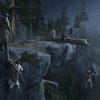
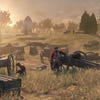
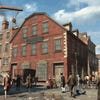
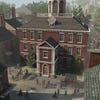

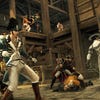
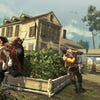
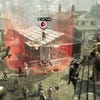
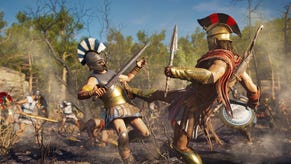
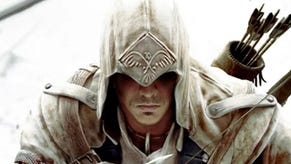
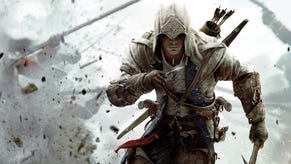
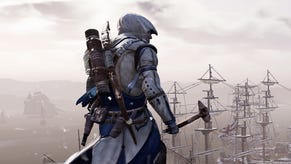







.png?width=291&height=164&fit=crop&quality=80&format=jpg&auto=webp)



